So my husband and I did this honeymoon do-over (let’s not talk about the first one, which was full of sickness and tropical storms) in August. Yes, that is over two months ago. My life has been crazy busy.
London was fantastic. We did so much in the nine days we were there, but could definitely have spent more time.
Not only did I most definitely find a knitting store:
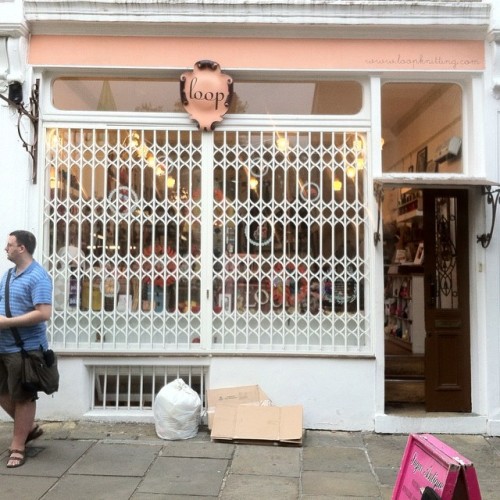
from whence I got some lovely English yarn.
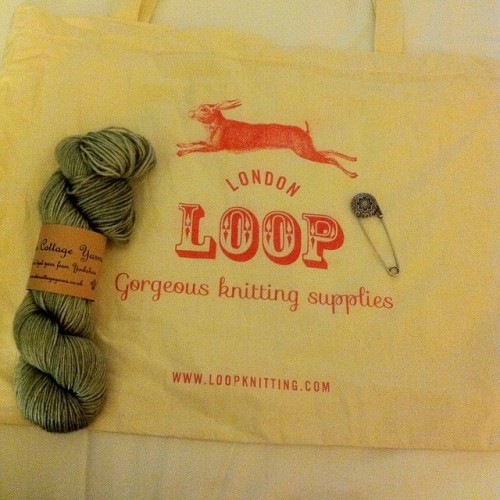
(it’s called Bowland DK by Eden Cottage Yarns. I fell in love with the colour. I also picked up a shawl pin, plus they gave me the bag for free!)
but I also chronicled my fibre-related exploits for y’all. In true librarian fashion.

The sign says:

This door was at Westminster Abbey, if you’re curious.
I’ll start with a very cool find at All Hallows-by-the-Tower. Though it’s right by the Tower of London, it’s easy to miss. I only found out about it through an obscure blog post. Even my guide book didn’t mention it, but it’s totally worth a visit. Not just for the fibre-craft related objects I’m going to show you, but it’s a beautiful old church. In fact it’s the oldest in London. It was built on the remains of a Roman house and road, which you can still see in the basement. An added bonus? It’s one of the few churches that lets you take photos inside.
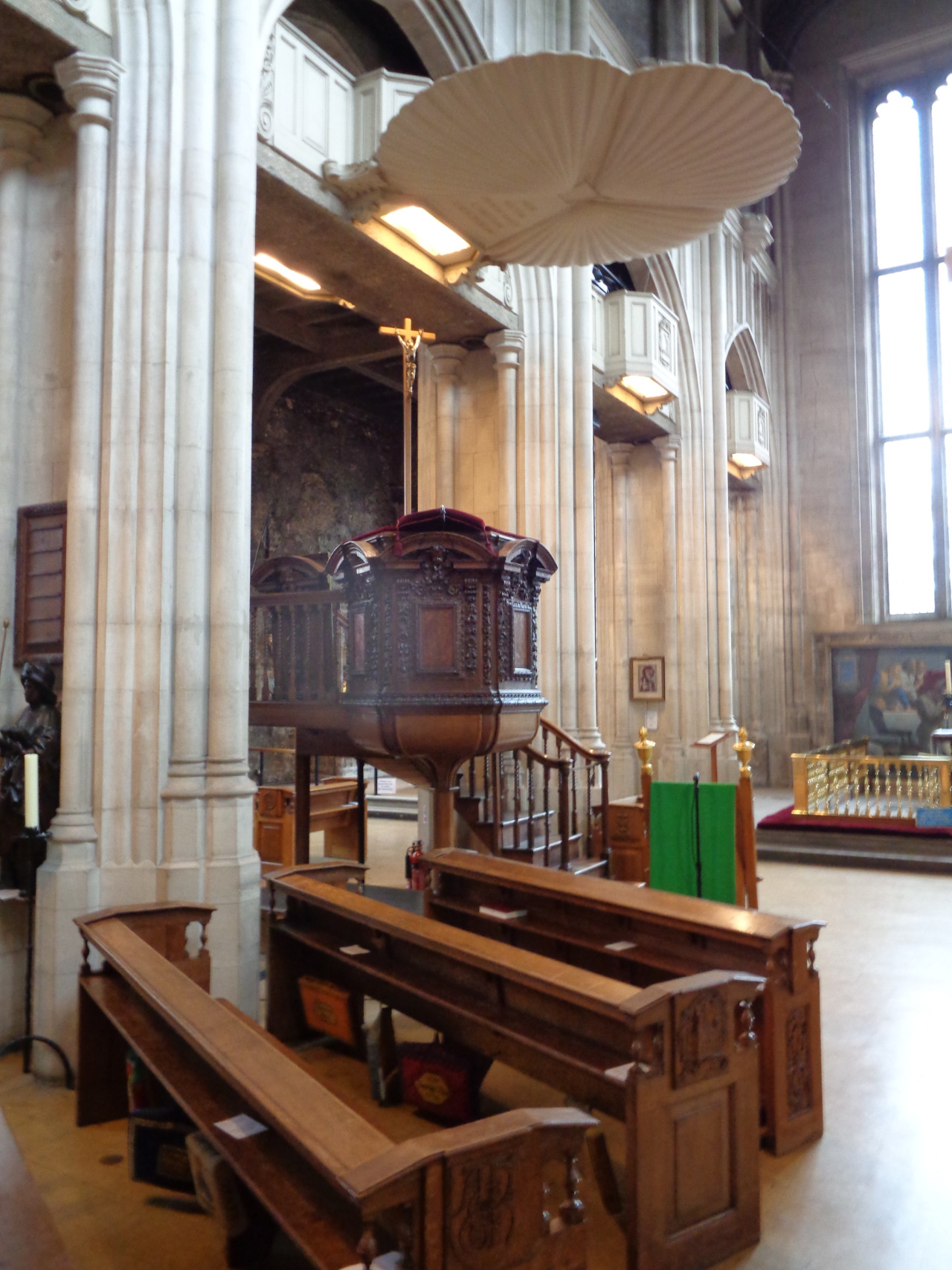
See the weird rectangle-shaped objects hanging below the pews? They are cushions: each handmade by a member of the congregation, going back generations. Here are some close-ups:




There is also this lovely weaving near the altar.

Another very cool find was the textile collection at the Victoria & Albert Museum.
I was SO excited to see these very famous ancient Egyptian socks made for wearing with sandals (ignore the “shoes” description. That’s for another item). These socks are often cited as an example of early knitting made using one needle, much like nålbinding.

The works below are woven tapestries from Byzantium.


The above is a woven silk piece depicting a bishop. It dates to 12-1300’s Germany or Italy. The very modern (i.e.: cartoon-like) looking face (complete with what looks like spectacles!) just kills me.
These woven pieces date to early Christianity in Egypt, around 400-600:
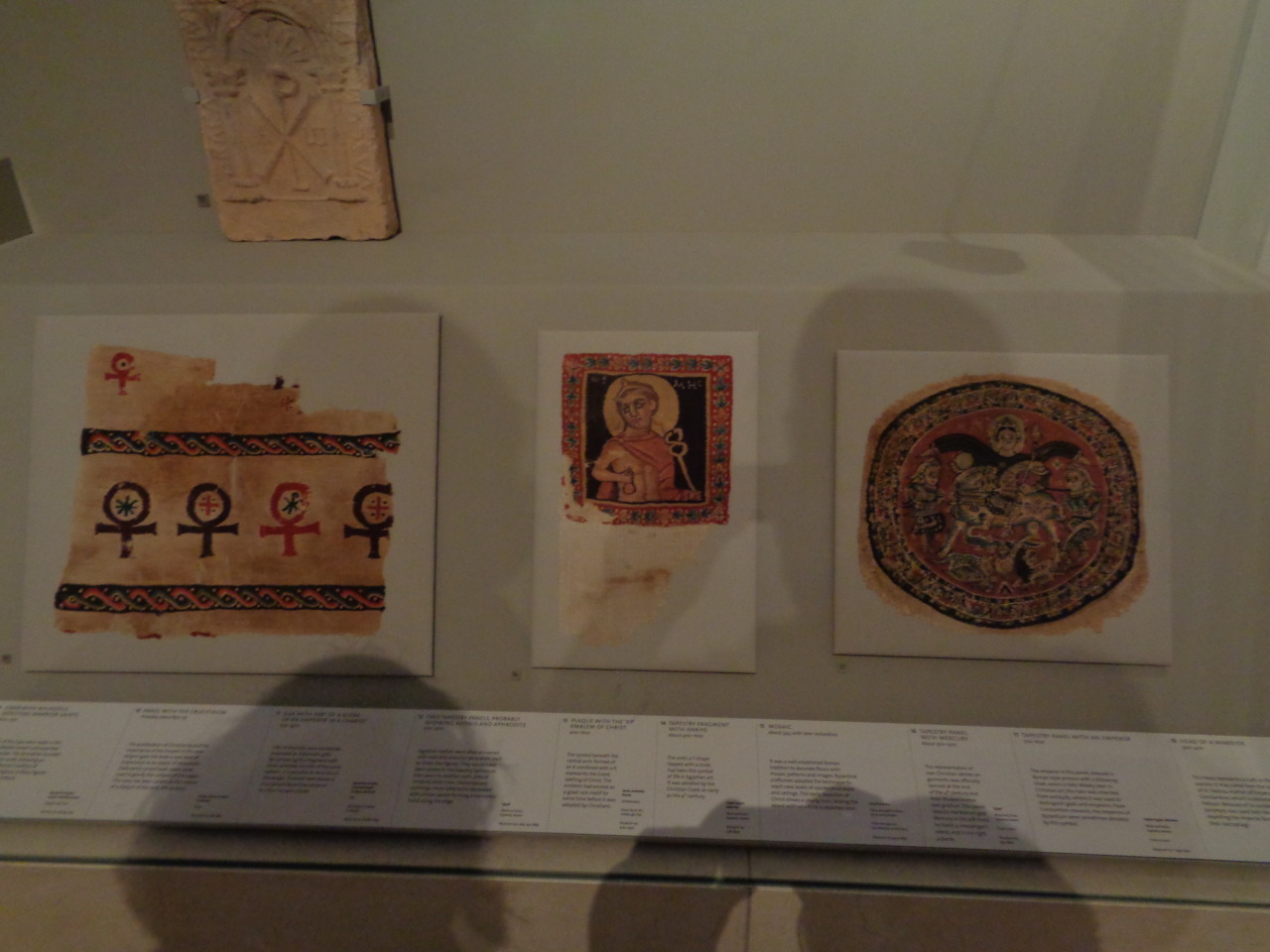
Here is a close up of the tapestry on the left. It depicts ankhs – an ancient Egyptian symbol of life that was adopted by the Christian Copts around the 4th century.
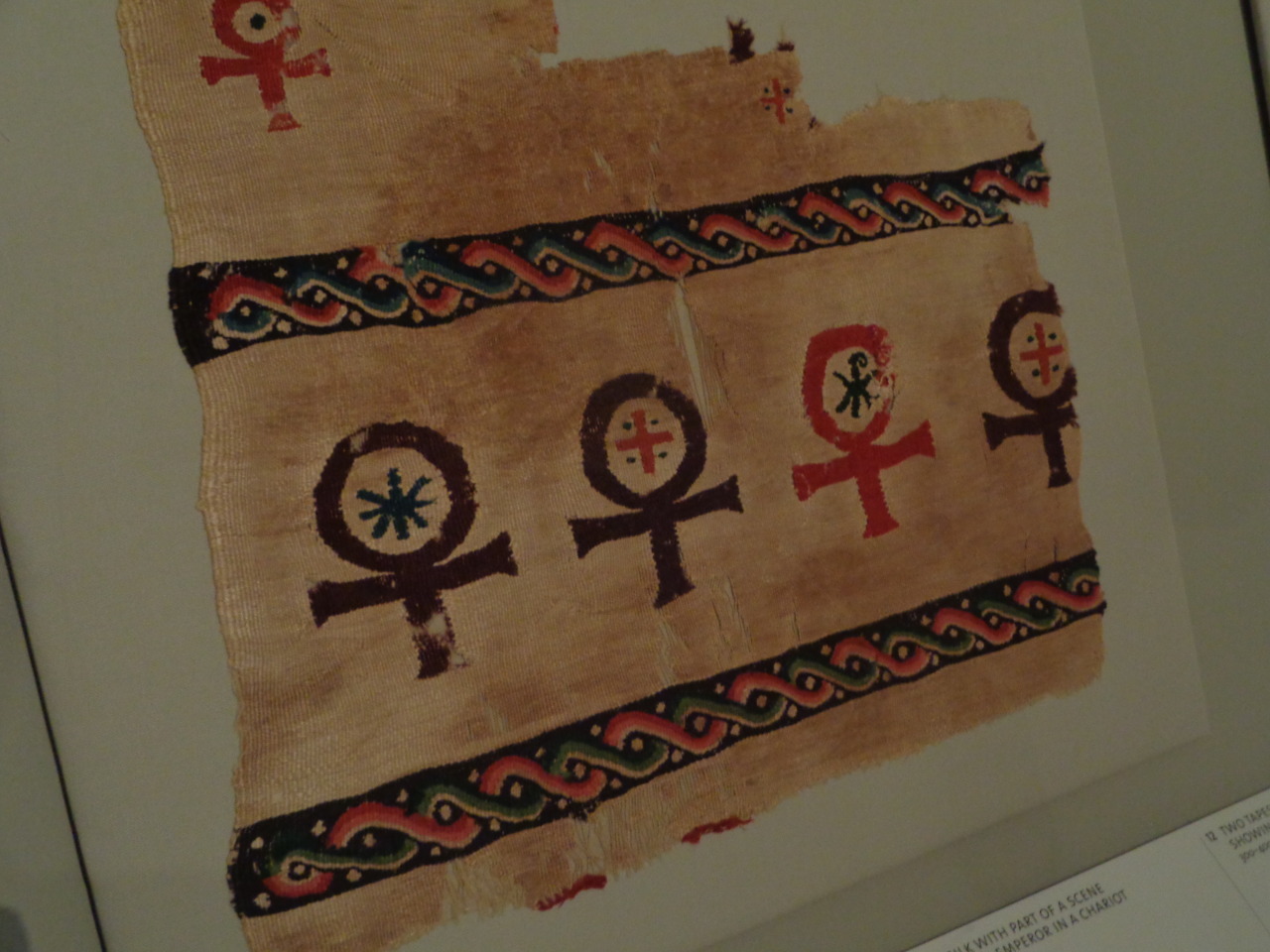
Below we have a quilt dating to 1360-1400. Probably made as a wedding gift, it depicts fourteen episodes from the adventures of Tristan. It was hard to take in all the detail on our camera, but you get the idea: lots and lots of stitching BY HAND. So gorgeous. It really has to be seen in person.

This next one is obviously a passion of the Christ scene. Probably from France around 1400-25. Once again woven BY HAND, folks. Our tour guide told us it took a professional weaver about a month working full time (sunrise to sunset) to make 1 square meter. Remember, most of these were big enough to cover a castle wall!

By the way, if you’re curious why tapestries were so common in the medieval period, here’s an answer: no central heating. Well-to-do homes that could afford tapestries were also typically made of stone. That sh*t gets cold!
We also got to see the famous, and enormous, ‘Boar and Bear Hunt’ woven wool tapestry, probably made in Arras, France or Tournai, Belgium around 1425-30.


The last fibre arts related stop that we made was at the Globe Theatre. I was super stoked to find a whole reproduction of an Elizabethan costume textile workshop in the museum.

Can you say “heaven”?
I really doubt that the following close-up images need introduction. Fleece, yarn, dye pots, sewing, pattern drafting, embroidery and lace work, it’s all here.
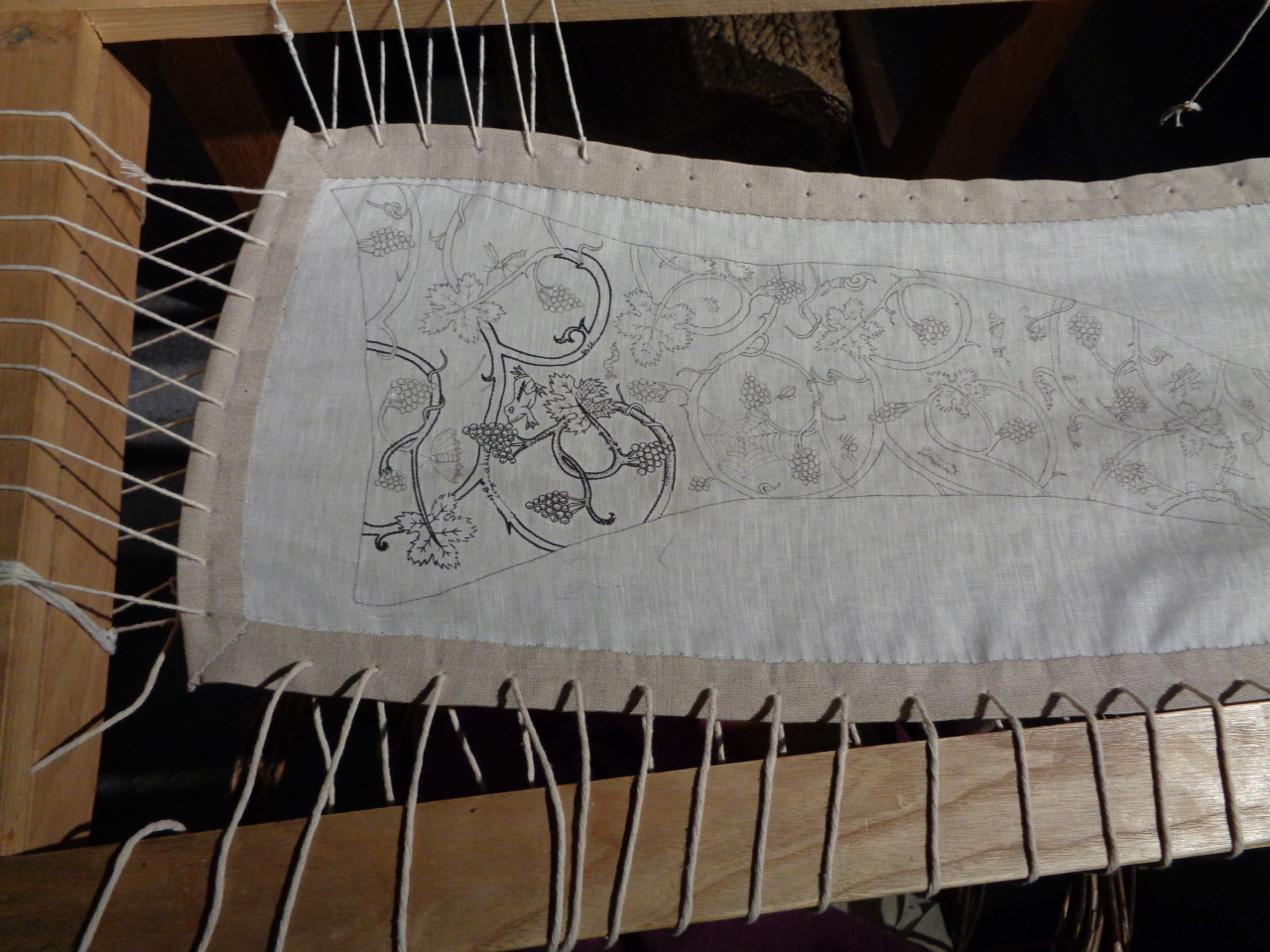

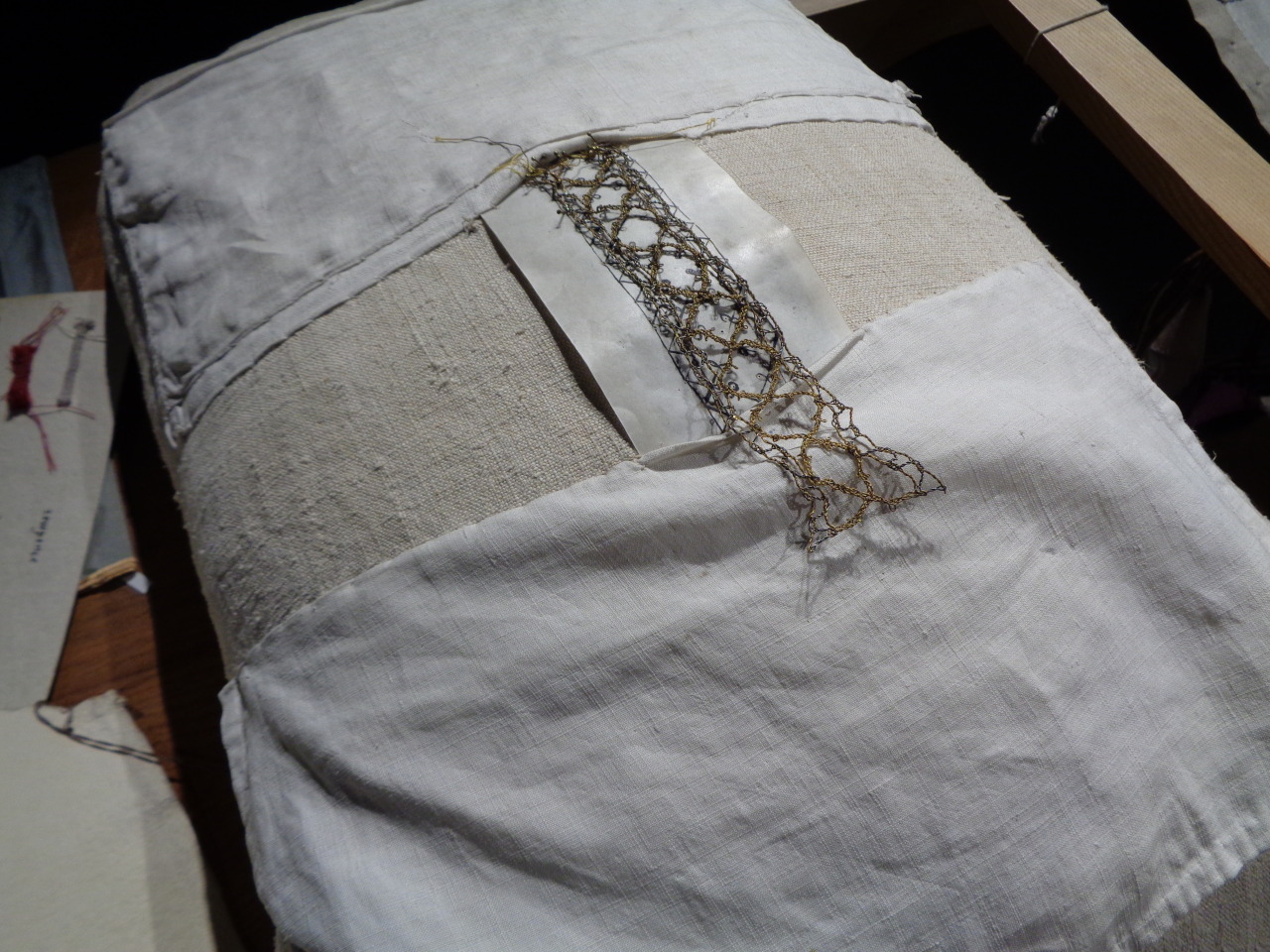


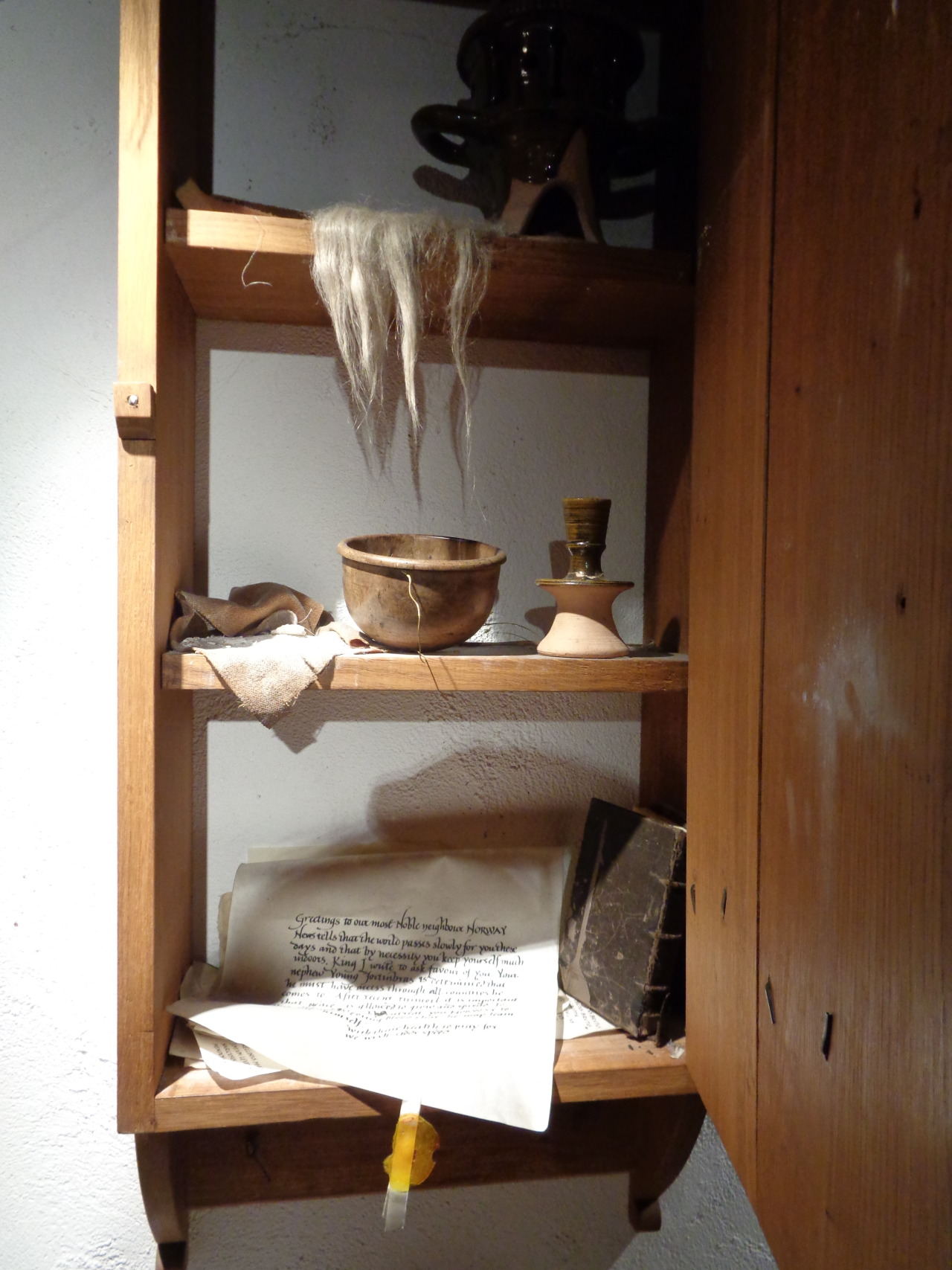


Pssst: the velvet above is authentic 15th-17th century Spanish and Italian handmade velvet.
And here we have the costume worn by an actress who played Queen Elizabeth at the Globe re-opening.

Check out the handmade lace!
I’ll end with this cool video my husband took of the Swiss Glockenspeil in Leicester Square near Piccadilly Circus/Covent Garden. Not textile related, but still a pretty cool handicraft.
